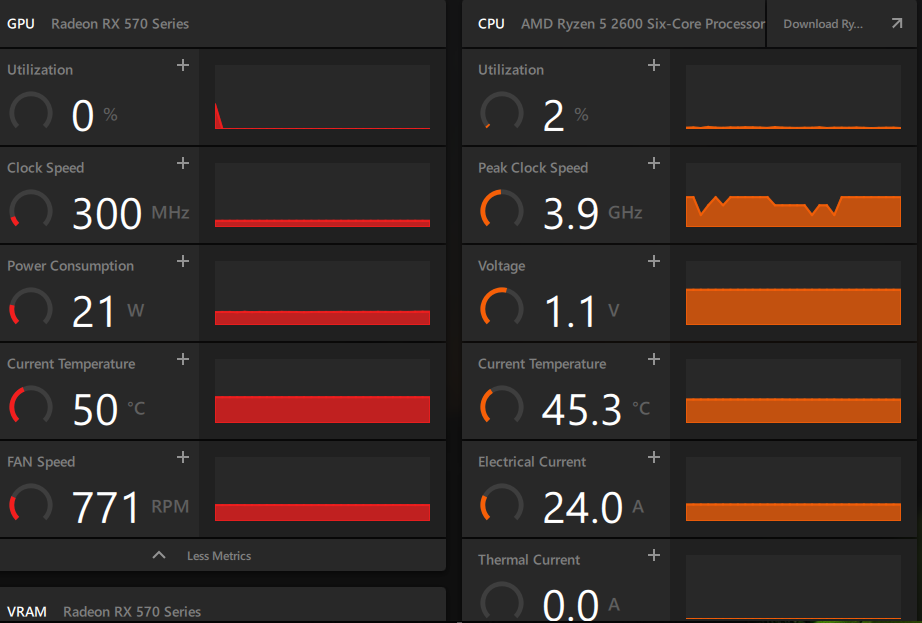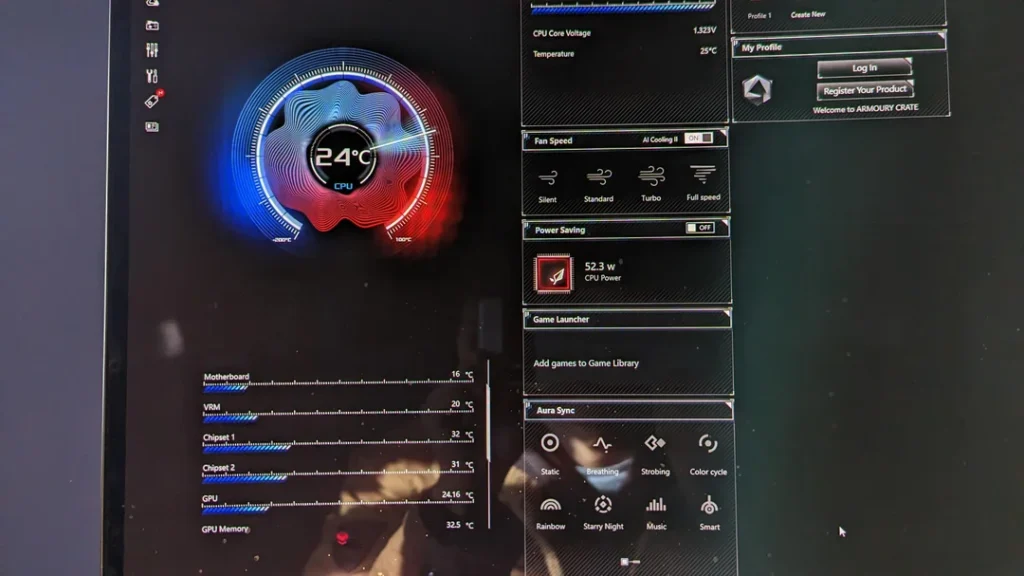When it comes to computer performance, keeping an eye on your CPU’s temperature is essential. If you’ve noticed your CPU idle temperature hovering around 50°C, you might be wondering: is this normal, or does it signal a potential problem?
A CPU idle temp of 50°C is safe but slightly high. Improve cooling, clean dust, and check thermal paste to optimize performance and prevent overheating.
A 50°C idle temp is a bit warm—clean up, boost cooling, and keep your CPU chill for peak performance!
Table of Contents
What Is CPU Idle Temperature?
The CPU idle temperature refers to the temperature your computer’s processor maintains when it’s not running any intensive tasks.

At this stage, the CPU is merely handling basic processes such as running the operating system and lightweight applications. It’s a key indicator of your system’s health and cooling efficiency.
Is 50°C Idle Temperature Normal?
If your CPU’s idle temperature is around 50°C, you might wonder if it’s a cause for concern. For many modern CPUs, this temperature is generally within the acceptable range, but it can be slightly high depending on several factors, such as the CPU model, room temperature, and cooling setup.
Factors influencing idle temperature include:
- Room temperature and humidity.
- Efficiency of the cooling system.
- Dust accumulation in the system.
- Overclocking.
Read Also: Cpu At 80 Degrees – Safe Or Dangerous!
When to Be Concerned?
While a CPU idle temperature of 50°C is generally not alarming, it can indicate underlying issues if paired with other symptoms such as:
- Frequent Overheating: Load temperatures consistently exceeding 85°C.
- Performance Throttling: Sluggish performance due to thermal throttling.
- Unusual Fan Noise: Excessive fan speed even at idle.
Causes of High Idle Temperature
Inadequate Cooling System:
Stock coolers may not be sufficient to handle the thermal output of some processors, especially high-performance ones. Upgrading to a more robust cooler can significantly lower idle temps.
Dust and Blockages:
Dust buildup inside the case and on components is one of the leading causes of high idle temperatures. It restricts airflow, causing the cooling system to underperform.
Poor Airflow in the Case:
A poorly designed PC case or one with improper fan placement can trap heat, raising the idle temperature of your CPU. Ensuring that cool air enters the case and hot air exits is essential for maintaining proper temperature.
Overclocking:
If you’ve overclocked your CPU, it will generate more heat, even at idle. Overclocking increases the baseline voltage, which naturally leads to higher temperatures.
Effects of a High Idle Temperature
High idle temperatures might not cause immediate damage, but over time, they can reduce your CPU’s lifespan and overall performance.

- Potential Damage to Hardware: Prolonged exposure to high temperatures can degrade thermal paste and harm sensitive CPU components.
- Reduced Performance: High idle temperatures can force the CPU to throttle performance, even during lighter tasks.
How to Lower CPU Idle Temperature?
Improving Your Cooling System:
- Install aftermarket coolers with better heat dissipation capabilities.
- Adjust fan speed settings in the BIOS to ensure your fans work efficiently.
Cleaning the CPU and Case:
- Dust off components and clean air filters regularly to avoid blockages.
Optimizing Thermal Paste Application:
- Reapply thermal paste if it has dried out. Use high-quality paste for optimal heat transfer.
Upgrading Components for Better Cooling
Benefits of Liquid Cooling Systems:
Liquid cooling provides superior thermal management by directly transferring heat from the CPU to a radiator.
Liquid cooling is especially useful for high-performance CPUs and overclocked systems. While the upfront cost might be higher than traditional air coolers, the results often justify the investment.
High-Quality Thermal Paste:
Thermal paste acts as a bridge between the CPU and its cooler, allowing for effective heat transfer.
Using a high-quality thermal compound ensures better thermal conductivity and can help reduce idle temperatures by a few degrees. Opt for premium brands such as Arctic Silver or Thermal Grizzly for optimal results.
Read Also: Is Anti Aliasing Cpu Or Gpu – A Simple Breakdown!
Software Tweaks to Manage CPU Temperature
Using BIOS Settings for Better Temperature Control:
Many motherboards offer advanced temperature management features through their BIOS or UEFI settings. By accessing the BIOS, you can:
- Adjust fan curves to optimize cooling performance.
- Lower the CPU voltage (undervolting) to reduce heat generation.
These tweaks require caution, as incorrect settings can lead to system instability.
Monitoring Tools to Track CPU Temprature:
Software like HWMonitor, Core Temp, or MSI Afterburner provides real-time CPU temperature data. Monitoring tools are essential for identifying unusual temperature spikes and ensuring your cooling measures are working effectively.
Some software even offers automatic fan control or temperature alerts to help you maintain optimal system health.
Tips for Long-Term CPU Maintenance

Regular Cleaning and Maintenance:
Over time, dust and grime can accumulate inside your PC case, obstructing airflow and clogging fans. A regular cleaning schedule can prevent this from happening. Here are a few tips:
- Use compressed air to blow out dust from fans, vents, and heat sinks.
- Remove and clean the case filters every few months.
- Check for thermal paste wear and reapply as necessary.
Avoiding Common Mistakes That Lead to Overheating:
Many users unintentionally worsen their CPU temperatures through simple mistakes, such as:
- Installing the CPU cooler improperly.
- Using low-quality or expired thermal paste.
- Blocking airflow by placing the PC case too close to walls or other obstructions.
Frequently Asked Questions:
1. What is the ideal idle temperature for a CPU?
The ideal idle temperature for most CPUs is between 30°C and 50°C. However, newer high-performance CPUs may idle slightly higher without any risk.
2. What tools can I use to monitor CPU temperature?
Popular tools include HWMonitor, Core Temp, and Open Hardware Monitor. These applications provide real-time temperature readings and alert you to potential issues.
3. How often should I clean my CPU?
It’s a good practice to clean your CPU and PC case every 3–6 months, depending on your environment. Dusty or humid areas may require more frequent cleaning.
4. Do laptops have higher idle temperatures than desktops?
Yes, laptops generally have higher idle temperatures due to compact designs and limited airflow. It’s normal for laptop CPUs to idle between 45°C and 60°C.
Conclusion:
A 50°C CPU idle temp is safe but on the higher side. Enhance cooling, clear out dust, and reapply thermal paste to boost performance and avoid overheating.
Read Also:










